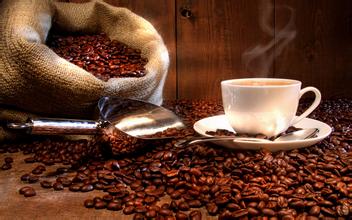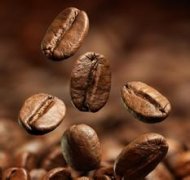How many ways are there to brew coffee at home? which one is more suitable for brewing coffee?
You can buy coffee at home. If you want to make coffee by hand, you can buy a coffee pot. The temperature of the coffee pot is about 95 degrees Celsius when boiling water is poured into the cold hand pot. At this time, you can grind the beans (I will grind the beans by hand or grind them first. As DIMLAU said, 95 degrees starts steaming, and when flushing, the kettle can start to flush at about 90 degrees. Basically, the water temperature is always in the right state, and you don't have to worry about it without a thermometer.
Powder-water ratio: for those who are too lazy to understand the golden cup, please read the boldface directly. Citing the rule of the fool's version of the golden cup (temporarily based on the American version of the gold cup, based on the average concentration and average extraction rate of American black coffee drinkers' favorite range of nearly 10,000 random samples), the data is 1.15% to 1.35%, and the extraction rate is 18% to 22%. Of course, the fool version should be streamlined, and we all take the midpoint, that is, our goal is 1.25% concentration and 20% extraction rate. So what can we control? Powder-water ratio ~ 1:16 is recommended (1g coffee powder corresponds to 16ml water). Under this powder-water ratio, the extraction rate is 20%, then the concentration is exactly 1.25%. Because it is the midpoint of the range, the fault tolerance rate is the highest.
Steaming: the first part of steaming is actually strong enough for the water to come into full contact with the coffee powder, exhaust the gas, and infiltrate the coffee powder to facilitate subsequent extraction. So there's no stick? There is a Tilafa, but you can't do it? You look good enough to wet the coffee powder. Japanese brewing will be steamed to only one drop, or not dripping and fully infiltrating, it is useless to tell you, scientifically speaking, it is just enough contact with powder and water.
Segmented extraction: in fact, it is water injection. In the video, the main variables that mainly rely on immersion extraction are grinding degree and soaking time. Water injection only needs to pay attention to the fact that coffee powder is soaked, and whether the circle is round or not. Whether the water flow is fine or not can be ignored. So we only need to control the total extraction time at two and a half to three minutes, the general extraction rate will not be too biased, during which time it will be horse step water injection or handstand water injection.
The pit of the equipment
What can be saved the most? Share the pot... A better sharing pot is basically more than 100 yuan, so just get a cup. The filter cup of HARIO V60 resin is about 30, and the filter paper is 20 to 100 pieces. There is no pressure to get a small pot to open the student party directly.
What is the deepest hole? Bean grinder, Xu Yingjie in the answer is a mixed forum, there are all kinds of divine comments. PORLEX is an Italian mill. Originally, family espresso is not very popular in Japan. A Japanese manufacturer can't buy a hand mill to use it. Today, we can still see that the PORLEX factory is a commercial miracle. I also specially went to the Japanese PORLEX official website to check, but they didn't say, ah, where did the news come from?

Important Notice :
前街咖啡 FrontStreet Coffee has moved to new addredd:
FrontStreet Coffee Address: 315,Donghua East Road,GuangZhou
Tel:020 38364473
- Prev

What kind of coffee tastes better? is individual coffee a brand?
Ways to drink coffee: there are three main ways for domestic people to drink coffee: one is to go to a better coffee shop, such as Starbucks, the second is to go to the supermarket to buy finished coffee, go home to make their own coffee, and the third is to buy coffee beans and grind their own coffee when they go home. Four: the following is mainly about how to make coffee: I think the taste of coffee is good or bad, one is the quality of coffee beans, suggestion
- Next

What are the skills of drinking coffee? the origin of coffee? the way of handling coffee?
People who drink too much instant coffee and vacuum compressed coffee always complain that the high-paced, fast-selling coffee tastes monotonous and has no flavor after roasting. It's just that nowadays people are busy every day, and a cup of coffee is just a pick-me-up when they are sleepy. As for the coffee beans hidden in it, they pay attention to the grinding and brewing of coffee beans.
Related
- Does Rose Summer choose Blue, Green or Red? Detailed explanation of Rose Summer Coffee plots and Classification in Panamanian Jade Manor
- What is the difference between the origin, producing area, processing plant, cooperative and manor of coffee beans?
- How fine does the espresso powder fit? how to grind the espresso?
- Sca coffee roasting degree color card coffee roasting degree 8 roasting color values what do you mean?
- The practice of lattes: how to make lattes at home
- Introduction to Indonesian Fine Coffee beans-- Java Coffee producing area of Indonesian Arabica Coffee
- How much will the flavor of light and medium roasted rose summer be expressed? What baking level is rose summer suitable for?
- Introduction to the characteristics of washing, sun-drying or wet-planing coffee commonly used in Mantenin, Indonesia
- Price characteristics of Arabica Coffee Bean Starbucks introduction to Manning Coffee Bean Taste producing area Variety Manor
- What is the authentic Yega flavor? What are the flavor characteristics of the really excellent Yejasuffi coffee beans?

